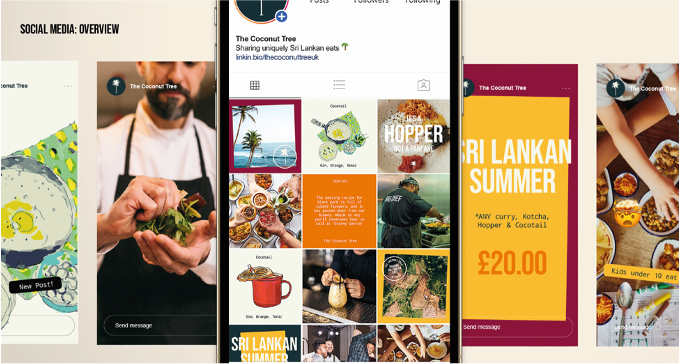Future Office Hospitality
A 3-part series on the future of the office
Part Three: Future Office Hospitality
By Emma Gullick, Associate Creative Director at design agency Phoenix Wharf
The new split between office versus remote working has found many employers searching for a precedent on how to tackle the design of the future workspace.
With a hybrid working model coming into effect for the majority of businesses, people are returning, albeit less than 5 days a week, to the office. Naturally, employers are looking at ways to transform their environments to suit new demands.
Research tells us that the newly evolved workplace will see a 22% decrease in individual workstations in favour of social spaces and areas designed for collaboration and group learning. (knoll)
Image via WeWork
However, 9 out of 10 nationalities rank a ‘quiet, professional environment’ among their top 5 reasons for wishing to return to the office highlighting that a flexible approach is a must for staff fulfilment.
With numerous perks to remote working offices need to become a destination, social watering hole and experiential hub offering more than a coffee machine and a comfortable sofa to entice workers out of their homes.
The office of the future is very much about human-centric design that considers how the user of the space feels as much as just what they are doing.
Injecting hospitality design principles into the office will be a major differentiator in attracting and retaining high performing, engaged employees. The hospitality sector has shown us that the design of an environment can greatly and immediately affect our mood, and this is crucial to how offices are designed going forward.
Paddington Exchange. Image via Universal Design Studio
Vitra CEO Nora Fehlbaum feels that ‘if an office has no character and colleagues hide from one another, it’s better to spare the commute and stay at home’ (Vitra via Frame).
Gensler’s Amanda Caroll points out that ‘creating distinct experiences that reflect your brand, your values and your mission is essential’. Much like a hospitality space is a spatial representation of a brand and what it stands for, the office will be too, more so than in the past.
Gensler’s project for Boston Consulting Group was all about creating that destination and translation of the company values. The previous office space resulted in employees avoiding entering the building in favour of remote working. It was redesigned using techniques familiar to hospitality design and the space is now ‘buzzing all the time’. Ross Love, senior partner at BCG says more people are now spending time in the office and job offer acceptances have doubled (Gensler).
You would not be alone in thinking new renderings of some of the latest office designs such as The Exchange in Paddington Square by Universal Design Studio are promoting an all-day café/restaurant space.
The kind of environment you imagine seeing customers on laptops and groups of colleagues catching up over lunch as well as a few with coffees and headphones plugged in.
That is exactly the point; the pre-pandemic lines between office and hospitality were already blurring space and that trend has been accelerated as we look to the post-pandemic workplace.
Numerous lockdowns along with continuing to live in a Covid addled world have forced employees to reassess their priorities resulting in many rethinking their work/life balance as well as the spaces they want to work in.
Illustration by Phoenix Wharf
A report by Gensler suggests the experience for staff should be
“personal and authentic and leave employees feeling as if they are guests at a high-end hotel”
a drastically different image to the stressed worker bustling to their enclosed cubicle and sweating through a day’s work. Flexibility is reportedly the most important workplace ‘perk’ post pandemic.
Pliancy across the number of remote working days, childcare and caregiving commitments are no longer things to compromise on and future will be a determining factor in attracting and retaining workers.
Companies need to utilise hospitality design to create spaces that employees feel proud to work in, maximising engagement and retention of staff.
Employers also need to be mindful that there is no one size fits all in terms of working space, environment style and desired conveniences so flexibility in all areas, amenities as well as office space, will be invaluable for new ways of working and collaborating.
Plenty of office departments have a dedicated in-house café and a handful of branded areas but this goes beyond the backlit logo and colourful welcome area.
T-Mobile Seattle. Image via Gensler
Businesses are urged to see their office spaces as a series of neighbourhoods that attend to the needs of different users and activities. Incorporating flexible design these include large breakout areas, library type spaces, social café hubs, experiential learning zones as well as more intimate meeting pods for individual working.
Lee Elliot of estate agency Knight Frank reminds us that ‘everyone talked about the death of the office. We missed the point, people wanted variety’.
This includes the staff canteen – changing menus or a ground floor roster of food trucks could change how we eat at work.
Employees are consumers who want to be flexible about how, where and when they work.
For example T-Mobile’s new campus in Washington, completed in 2020. The space hosts multiple indoor and outdoor areas including an Airstream serving ice cream and an integrated Starbucks.
Adopting a tailored, hospitality inspired design approach for future workplaces that caters to employee well-being and creates a destination will not only ensure the office makes a dynamic comeback but will also offer a fun and social respite from remote work.
Thank you for reading!
Did you miss our previous series on Liquid Retail?
Adapt and transform your brand to meet customer needs in the quickest and most efficient way possible. Click on the button below to download the full eBook, or contact us here.







